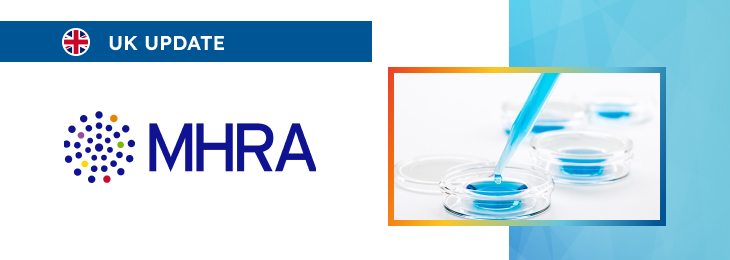The new article describes in detail the new regulatory policy for in vitro diagnostic medical devices as suggested by the UK authority.

Table of content
The Medicines and Healthcare Products Regulatory Agency (MHRA), the UK regulating authority in the sphere of medical devices, has published a consultation document dedicated to common specification requirements for in vitro diagnostic medical devices. The document provides an overview of the applicable regulatory requirements, as well as additional clarifications and recommendations to be taken into consideration in order to ensure compliance.
At the same time, the authority reserves the right to make changes to the guidance and recommendations provided therein, should such changes be reasonably necessary to reflect corresponding amendments to the underlying legislation.
Common Specifications: Key Points
The Medicines and Medical Devices Act 2021 allows for amendments to the regulations for in vitro diagnostic (IVD) devices. Views are being sought on the inclusion of common specification requirements in the Medical Devices Regulations 2002 (MDR 2002) for high-risk IVD devices before they can receive a UKCA marking and be placed on the GB market. Additionally, there is a proposal to remove requirements for COVID-19 test devices from the MDR 2002.

Purpose of Common Specification Requirements
According to the document, Common Specification requirements serve as a minimum set of performance expectations to address public health concerns regarding the safety or performance of high-risk IVD devices. These technical requirements ensure that manufacturers demonstrate compliance with stringent standards.
The concept of “Common Specifications” is similar to “common technical specifications” currently in place for high-risk IVD devices under the MDR 2002, such as tests for detecting HIV, hepatitis, blood grouping, and human T-cell lymphotropic virus. High-risk IVD devices must undergo a conformity assessment by an Approved Body, which includes meeting these specifications for performance evaluations and re-evaluations.
Classification Amendments in Medical Device Regulations
As further explained by the MHRA, the Medical Device Regulations are undergoing classification amendments, shifting from a predetermined list to a risk-based classification system. This new system categorizes devices from Class A (lowest risk) to Class D (highest risk), aligning with international standards agreed upon by the International Medical Device Regulators Forum (IMDRF) and used in the EU.
Consequently, the common technical specifications referenced in the current MDR 2002 for List A devices will become obsolete. The proposed Common Specification requirements will apply to Class D IVD devices, ensuring they meet updated performance standards.
Quality and Technical Requirements for COVID-19 Tests
The Common Specification requirements include criteria for Coronavirus (SARS-CoV-2) tests, which would replace the Coronavirus Test Devices Approvals (CTDA) regulations in the current MDR 2002. Introduced in July 2021, the CTDA policy aimed to ensure COVID-19 tests adhered to minimum quality and technical standards. A review in December 2022 confirmed that the CTDA policy successfully improved the quality of COVID-19 tests on the UK market.
The proposed Common Specification requirements will achieve similar or better standards, eliminating the need for the CTDA process and reducing regulatory duplication.
Policy Proposal for Common Specification Requirements
The proposal described in the document includes the following key elements:
- Introduction of Common Specification Requirements for Class D IVD Devices: This aligns with EU Commission Implementing Regulation 2022/1107, ensuring that high-risk Class D IVD devices meet stringent safety and performance standards. Approved Bodies will assess these devices against the Common Specification requirements during the conformity assessment process.
- Inclusion of Common Specification Requirements in a Post-Market Performance Follow-up (PMPF) Plan: A PMPF plan is essential for ongoing monitoring of the safety and effectiveness of IVD devices throughout their lifecycle. The proposal requires Approved Bodies to assess the PMPF plan to ensure it includes monitoring for Common Specifications.
- Removal of COVID-19 Test Device Requirements from MDR 2002: This change will prevent regulatory duplication and unnecessary burdens for the parties involved in operations with IVD devices. Once implemented, manufacturers will only need to comply with Common Specifications for SARS-CoV-2 tests, with Approved Bodies assessing performance against these requirements instead of the current CTDA assessment managed by MHRA.
Impact and Alignment with International Standards
The document also clarifies the expected outcomes of the changes suggested by the MHRA and the way they would impact the existing regulatory framework. According to the document, the proposed regulatory amendments ensure that high-risk IVD devices continue to meet high safety standards, addressing any gaps in the current regulations.
This approach aligns GB requirements with those of Northern Ireland and international standards, promoting harmonization and consistency across jurisdictions. Feedback from the November 2021 consultation indicated support for aligning with the General Safety and Performance Requirements (GSPR) in the IVDR, which necessitates the use of harmonized standards and Common Specifications to demonstrate conformity with GSPRs.
Conclusion
In summary, the proposed Common Specification requirements are intended to enhance patient safety by ensuring high-risk IVD devices meet rigorous performance standards. With the adoption of these requirements, the regulatory framework will align with international best practices, reduce regulatory burdens, and ensure consistent, high-quality standards for IVD devices on the GB market. The consultation seeks input from the public, healthcare professionals, and industry stakeholders to refine and implement these regulatory changes effectively.
How Can RegDesk Help?
RegDesk is an AI-powered Regulatory Information Management System that provides medical device companies with regulatory intelligence for over 120 markets worldwide. It can help you prepare and publish global applications, manage standards, run change assessments, and obtain real-time alerts on regulatory changes through a centralized platform. Global expansion has never been this simple.

